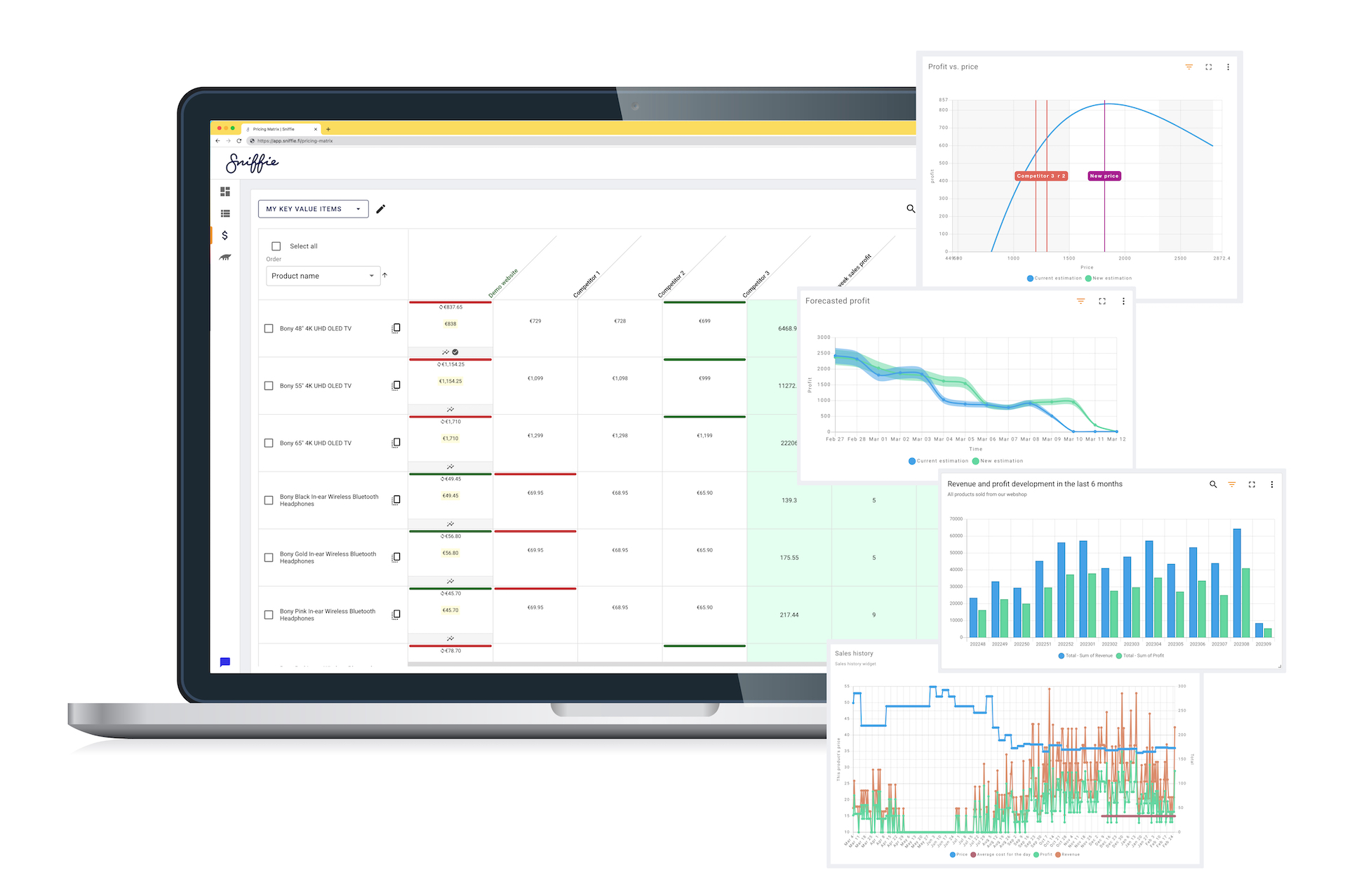Expanding your business internationally comes with unique challenges, particularly when it comes to pricing. In this blog post, we explore the considerations and best practices for adapting pricing strategies to different markets, currencies, and cultural norms. Discover how the right pricing software can help facilitate seamless global expansion through localization and international pricing capabilities.
Challenges of Global Pricing Strategies
Expanding internationally brings various challenges that require careful consideration when developing pricing strategies. Here are some examples:
- Currency fluctuations: Currency exchange rates can fluctuate, affecting the profitability of international sales. For instance, let’s say a U.S.-based company plans to expand into Europe. If the euro strengthens against the dollar, it might impact the company’s pricing strategy. They would need to consider whether to adjust prices to maintain profit margins or absorb the impact to remain competitive.
- Market variations: Different markets have unique characteristics, including purchasing power, competition, and consumer preferences. A clothing retailer expanding to Asia would need to research the local market to understand price expectations, local brands, and consumer preferences. They might find that adjusting prices, offering localized promotions, or introducing culturally relevant products is necessary to appeal to the target audience.
- Regulatory differences: Each country has its own regulations and compliance requirements that can impact pricing strategies. For example, retailers expanding to Europe have to consider the Omnibus directive, the EU directive obliging stores to show the lowest 30-day price when doing discounts (psst: we have an app for that)
To address these challenges, you should employ strategies such as conducting thorough market research, partnering with local distributors or experts, leveraging pricing analytics and software tools, and adapting pricing strategies based on market-specific insights. By carefully navigating these complexities, you can create effective pricing strategies that resonate with customers and drive international growth.
Want to try out Sniffie?
Take a spin with our free trial for Shopify to give you a thorough outlook on how we could support you.
Claim your free 14-day trial for Shopify now!
See the power of Sniffie with your own Shopify data. Fill-out the form below to gain access to your demo account within 24 hours.

Adapting Prices to Different Markets
When adjusting prices for different countries, market research and customer segmentation play a crucial role. Here are some strategies to consider:
- Conduct thorough market research: Gain a deep understanding of each target market by studying local consumer behavior, preferences, and purchasing power. Analyze market size, growth potential, and competitive landscape to identify opportunities and challenges specific to each country.
- Segment customers based on demographics and psychographics: Divide your target market into distinct segments based on factors such as age, income, lifestyle, and preferences. This segmentation helps tailor pricing strategies to meet the unique needs and expectations of different customer groups within each country.
- Consider local purchasing power: Adjust prices based on the local economic conditions and purchasing power of customers in each country. For example, a luxury brand may need to set higher prices in markets with a higher average income, while adopting a more affordable pricing strategy in markets with lower purchasing power.
- Analyze the competitive landscape: Research and understand the pricing strategies of competitors in each country. Determine how your offerings compare in terms of value proposition and quality. Pricing strategies should be developed in a way that positions your products or services competitively in the local market.
- Test and refine pricing strategies: Implement pilot programs or conduct pricing experiments to evaluate the effectiveness of different pricing strategies in specific markets. Continuously monitor customer response, sales data, and market trends to refine and optimize pricing strategies over time.
Understanding Currency Exchange
Currency management is a crucial aspect of pricing decisions when expanding internationally. Here are some techniques to mitigate risks associated with currency fluctuations and ensure consistent pricing across multiple markets:
- Monitor currency exchange rates: Stay informed about the currency exchange rates of the countries you operate in or plan to expand into. Regularly track and analyze fluctuations to identify trends and potential risks that could impact pricing decisions.
- Set currency conversion policies: Determine how you will handle currency conversions and whether you will use fixed exchange rates, market rates, or a combination of both. Establish clear guidelines and policies to ensure consistency in currency conversions across different markets.
- Implement dynamic pricing strategies: Consider implementing dynamic pricing techniques that allow you to adjust prices in real-time based on currency fluctuations. This ensures that your pricing remains competitive and aligned with the current exchange rates.
- Consider local currency pricing: In some cases, it may be beneficial to price products or services in the local currency of each market. This can help eliminate customer confusion and simplify the purchasing process. However, it’s essential to carefully consider the potential impact on profitability and customer perception.
- Optimize pricing for local market conditions: While maintaining consistency in pricing across markets is important, it’s also crucial to adapt pricing to local market conditions. Take into account factors such as local purchasing power, competition, and customer preferences to ensure your pricing remains attractive and relevant in each market.
Leveraging Pricing Software for Global Expansion
Pricing software can greatly simplify and streamline your international pricing efforts. Here’s how:
- Localization features: Effective international pricing requires considering local market dynamics, customer preferences, and cultural norms. Advanced pricing software often includes localization features that allow you to adapt prices to different markets seamlessly. These features enable you to customize pricing strategies based on factors such as currency, language, regional pricing regulations, and local purchasing power.
- International pricing capabilities: International expansion often involves dealing with multiple currencies and varying cost considerations. Advanced pricing software provides robust international pricing capabilities, allowing you to manage and update prices across different markets effortlessly. It automates currency conversions and cost adjustments, ensuring accurate and consistent pricing across geographies.
- Data-driven insights: Pricing decisions should be based on data-driven insights rather than assumptions. Advanced pricing software leverages sophisticated analytics and algorithms to provide actionable insights. It helps you monitor competitor pricing, and market data to optimize pricing strategies for each international market. By leveraging data-driven insights, you can make informed decisions that maximize profitability and market competitiveness.
- Pricing automation and efficiency: Manual pricing management becomes increasingly challenging as you expand internationally. Advanced pricing software automates routine pricing tasks, reducing manual effort and minimizing the risk of errors. It enables you to set pricing rules, apply dynamic pricing strategies, and update prices across multiple markets simultaneously. This automation streamlines your pricing processes, saves time, and improves overall efficiency.
- Integration with other systems: Advanced pricing software often integrates seamlessly with other systems such as ERP and CRM. This integration allows for seamless data flow, enabling you to leverage comprehensive customer and transaction data to inform your pricing decisions.
- Scalability and flexibility: As your international presence expands, your pricing needs will evolve. Pricing software is designed to scale with your business, accommodating the complexity and diverse requirements of global markets. It provides flexibility to adjust pricing strategies, adapt to changing market conditions, and meet the unique demands of each international market you operate in.
By leveraging pricing software, businesses can simplify their international pricing efforts, optimize pricing strategies, and achieve greater efficiency and accuracy. The localization features, international pricing capabilities, data-driven insights, automation, and scalability offered by advanced pricing software empower businesses to navigate the complexities of international pricing with confidence and achieve success in global markets.
Conclusion
Expanding globally requires careful consideration and adaptation of pricing strategies. By understanding the challenges, adapting to market variations, and leveraging the right pricing software, you can navigate international pricing successfully. Embrace localization, cultural sensitivity, and data-driven insights to drive growth and profitability in global markets.


